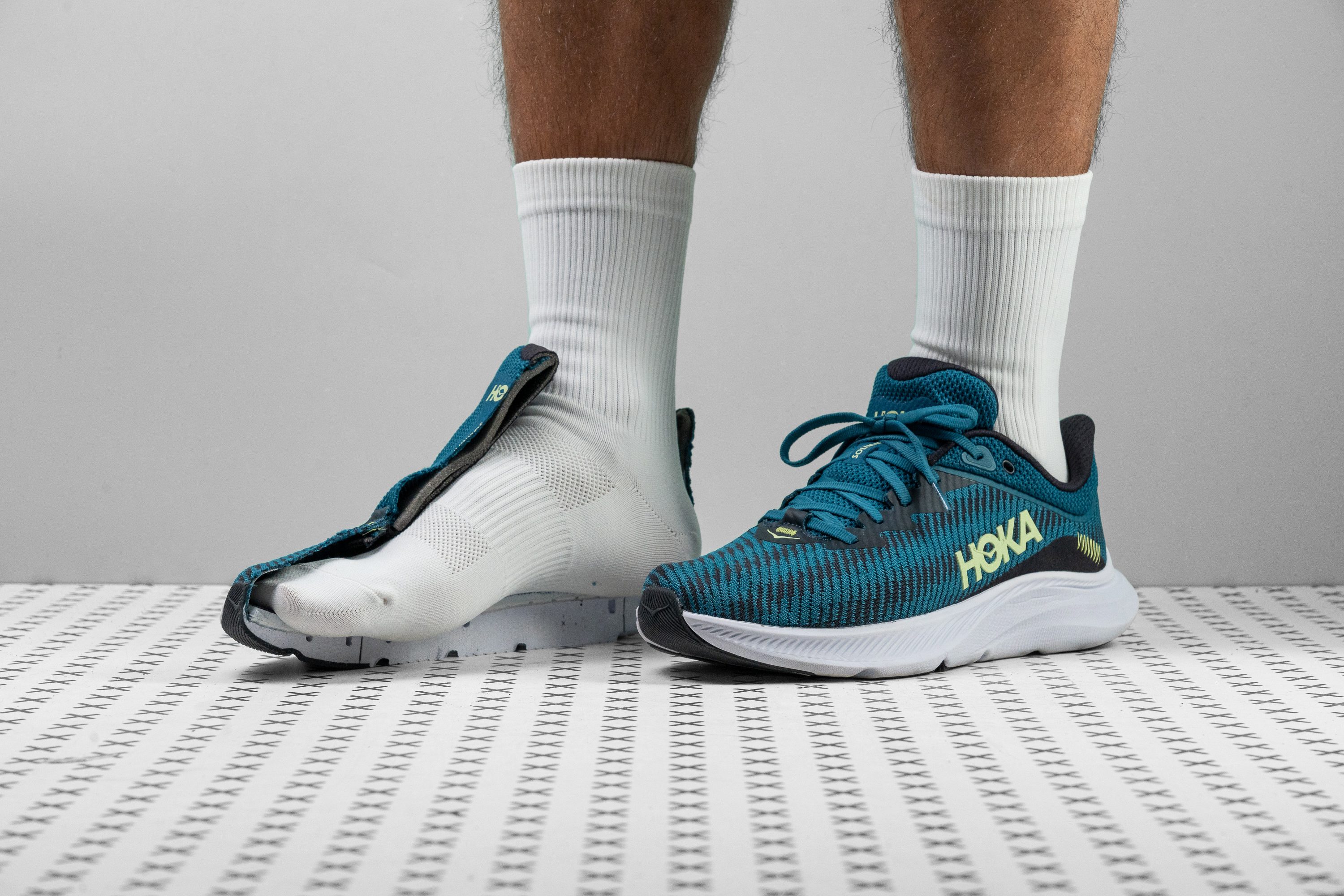Our verdict
- Top pick in best Shoes for gym and running
Pros
- Versatile for different activities
- Breezy upper
- Comfy interior padding
- Smooth and pleasant ride
- Great stability
- Lightweight
- Affordable for being a Hoka
- Affordable for being a Hoka
Cons
- Too firm for some
- Narrow toebox
- Lacks cushioning for longer runs
Audience verdict
- Top 25% in shoes for gym and running
- Top 24% most popular running shoes
Comparison
The most similar running shoes compared
+ + Add a shoe | |||||
|---|---|---|---|---|---|
| Audience score | 87 Great! | 92 Superb! | 88 Great! | 87 Great! | |
| Price | £130 | £130 | £80 | £110 | |
| Pace | Daily running | Daily running | Daily running | Daily running | |
| Shock absorption | Moderate | High | Low | - | |
| Energy return | Low | Moderate | Low | - | |
| Traction | Moderate | Moderate | Low | - | |
| Arch support | Neutral | Neutral | Neutral | Neutral | |
| Weight lab Weight brand | 8.2 oz / 232g 8.5 oz / 241g | 10.1 oz / 285g 9.7 oz / 275g | 8.5 oz / 241g 9.2 oz / 260g | 9 oz / 254g 9.4 oz / 266g | |
| Lightweight | ✓ | ✗ | ✓ | ✗ | |
| Drop lab Drop brand | 6.4 mm 6.0 mm | 6.5 mm 6.0 mm | 9.3 mm 10.0 mm | 6.0 mm 8.0 mm | |
| Strike pattern | Mid/forefoot | Mid/forefoot | HeelMid/forefoot | Mid/forefoot | |
| Size | True to size | True to size | True to size | True to size | |
| Midsole softness | Balanced | Soft | Balanced | Balanced | |
| Difference in midsole softness in cold | Big | Normal | Normal | Small | |
| Toebox durability | Good | Decent | Good | Bad | |
| Heel padding durability | Decent | Bad | Good | Decent | |
| Outsole durability | - | Good | Decent | Good | |
| Breathability | Moderate | Moderate | Breathable | Warm | |
| Width / fit | Narrow | Narrow | Medium | Medium | |
| Toebox width | Narrow | Medium | Medium | Medium | |
| Stiffness | Moderate | Moderate | Moderate | Stiff | |
| Torsional rigidity | Moderate | Stiff | Moderate | Flexible | |
| Heel counter stiffness | Flexible | Moderate | Moderate | Flexible | |
| Rocker | ✗ | ✓ | ✗ | ✗ | |
| Heel lab Heel brand | 30.4 mm 26.0 mm | 34.1 mm 38.0 mm | 29.7 mm 30.0 mm | 30.2 mm 27.0 mm | |
| Forefoot lab Forefoot brand | 24.0 mm 20.0 mm | 27.6 mm 32.0 mm | 20.4 mm 20.0 mm | 24.2 mm 19.0 mm | |
| Widths available | NormalWide | Normal | Normal | Normal | |
| Orthotic friendly | ✓ | ✓ | ✓ | ✓ | |
| Season | All seasons | All seasons | SummerAll seasons | All seasons | |
| Removable insole | ✓ | ✓ | ✓ | ✓ | |
| Ranking | #156 Top 43% | #7 Top 2% | #121 Top 33% | #164 Top 45% | |
| Popularity | #89 Top 24% | #269 Bottom 27% | #111 Top 30% | #309 Bottom 16% |
Cushioning
Shock absorption
We tested this casual-running shoe knowing its thinner midsole wouldn’t offer top-tier cushioning. The forefoot registered 96 SA, a number that seems more suitable for lightweight runners.
Meanwhile, heel strikers are better supported with 116 SA in the rear, which provides decent impact dampening for a moderately-cushioned, everyday option.
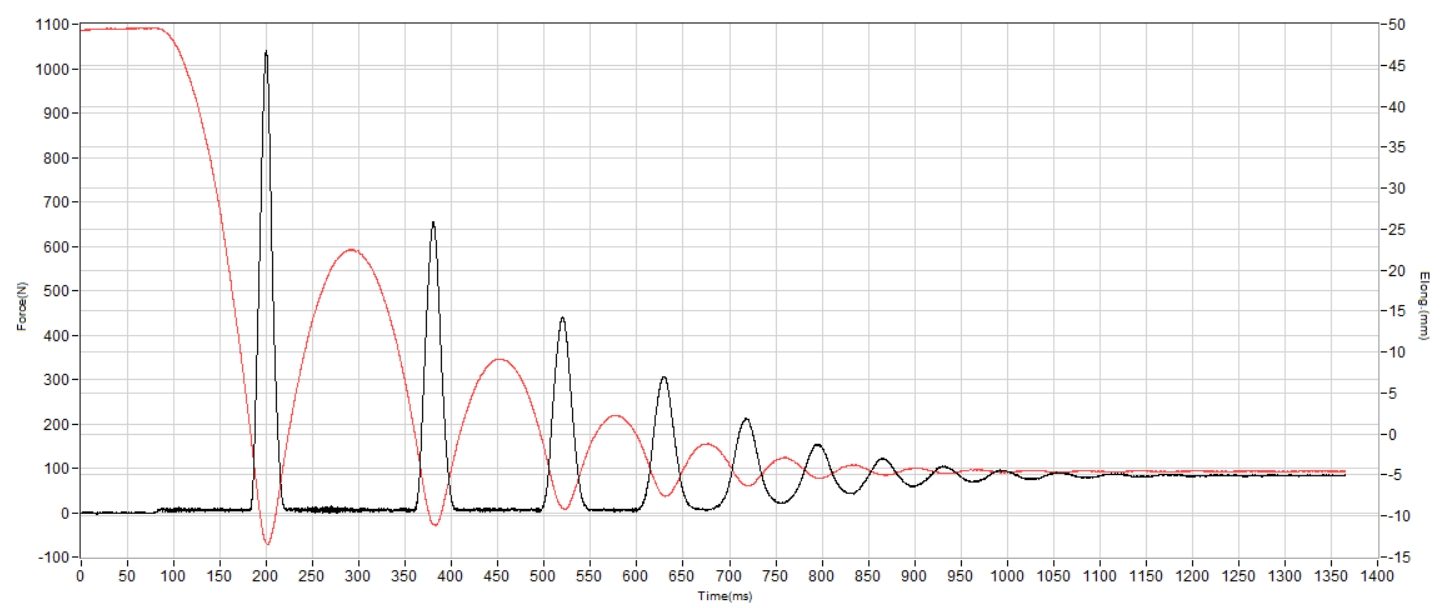
| Hoka Solimar | 116 SA |
| Average | 129 SA |
Energy return
Energy return came in below average, which wasn’t a surprise given that this isn’t a maximalist shoe, quite the opposite, in fact. Our ASTM F1976 test showed a result of 53.6%.
| Hoka Solimar | 53.6% |
| Average | 58.5% |
Size and fit
Size
Hoka Solimar fits true to size (244 votes).
Traction / Grip
Traction test
We discovered the Hoka Solimar landed in the average zone for wet grip—posting a 0.37 in our rainy-condition test. This means its slip resistance is just fine for most daily runs, though not outstanding by any means. Conversely, on dry roads, our testing revealed a noticeably more secure ride.
| Hoka Solimar | 0.37 |
| Average | 0.48 |
Flexibility / Stiffness
The Solimar turned out to be pretty forgiving in the forefoot, and its flexibility reflected in our below-average stiffness score of 11.8N. This means that the shoe requires less force to bend by 30 degrees than the average shoe.
This pliability creates smooth heel-to-toe transitions when running or walking, and is also convenient for doing planks, lunges, and other gym exercises.
| Hoka Solimar | 11.8N |
| Average | 15.3N |
Who should buy the HOKA Solimar
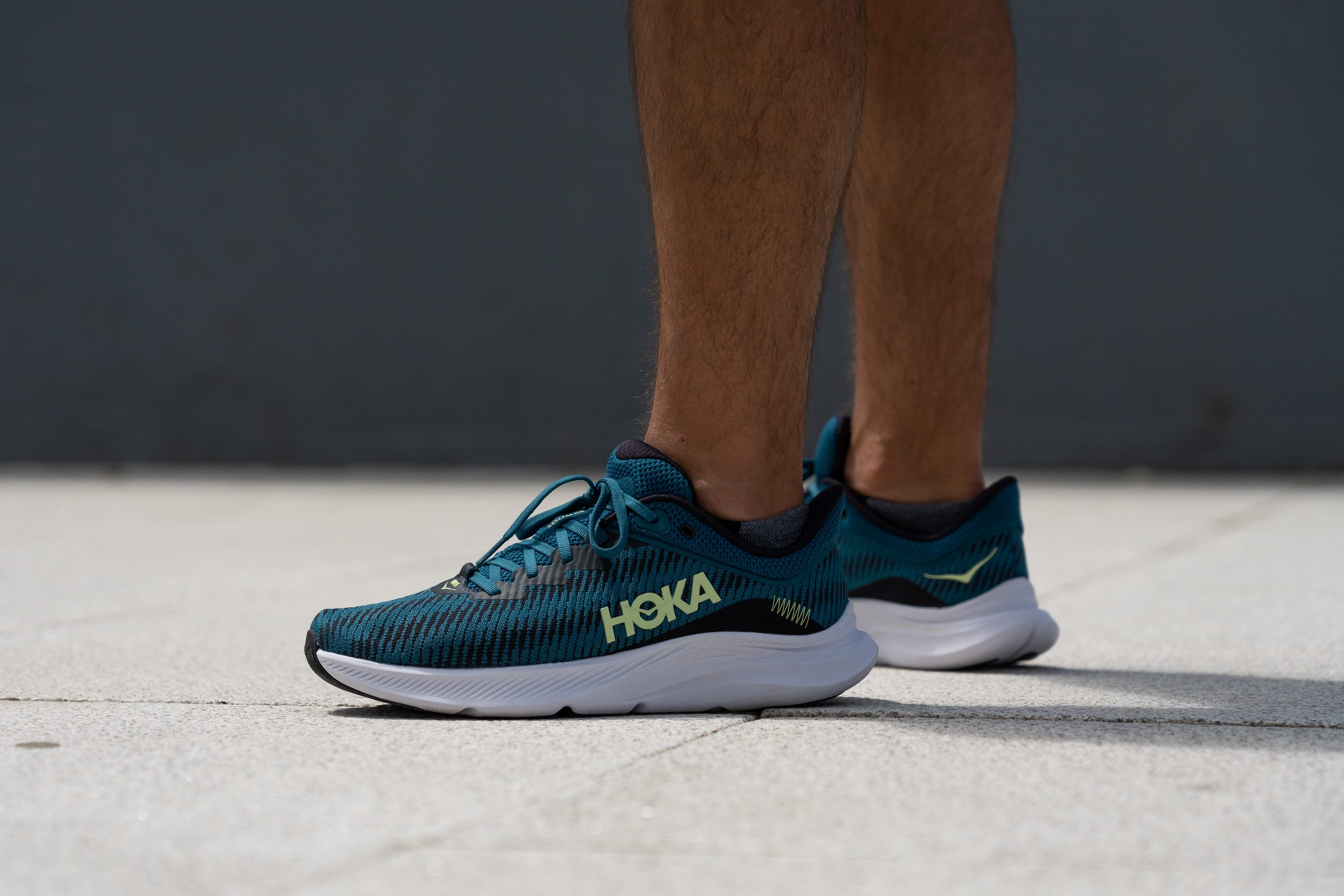
Get it if you are after a good quality shoe that can do a bit of everything. Being both light and stable, it’s perfect if you are a gym goer who does some running, as long as you keep your runs to short distances and you don’t mind a firm feel underfoot, as we found.
Who should not buy it
We think you shouldn't consider this shoe if you:
- like softer shoes. Get the HOKA Clifton 9 instead
- run long distances. In that case, the more cushioned HOKA Rincon 3 is a better choice for you.
A jack of all trades
Contrary to what Hoka has done before, in this case, we have a shoe that is categorised as a cross-training model, for running, walking, and gym workouts.

Without being exceptional in any of these areas, we found it good enough to tackle all these tasks, and also an excellent lifestyle shoe. Probably, one of the best do-it-all shoes in the market right now, if not the best.
Incredibly tough, breathes easy
Whether you're sweating inside at the gym or outside in the summer heat, the Solimar has got you covered.
Our eye-popping breathability test verified this shoe's excellent breathability level. Despite the use of thick and comfortable knit, the Solimar evacuates hot air straight through the toebox with surprising efficiency. The difference when compared to the run-of-the-mill Adidas Runfalcon is truly remarkable.
With the light test, it becomes clear just how Hoka nailed it, delivering top-notch breathability even with a plush upper. There's a clever design here, letting air flow around freely while keeping your feet cosy inside, making this shoe a true all-season workhorse.
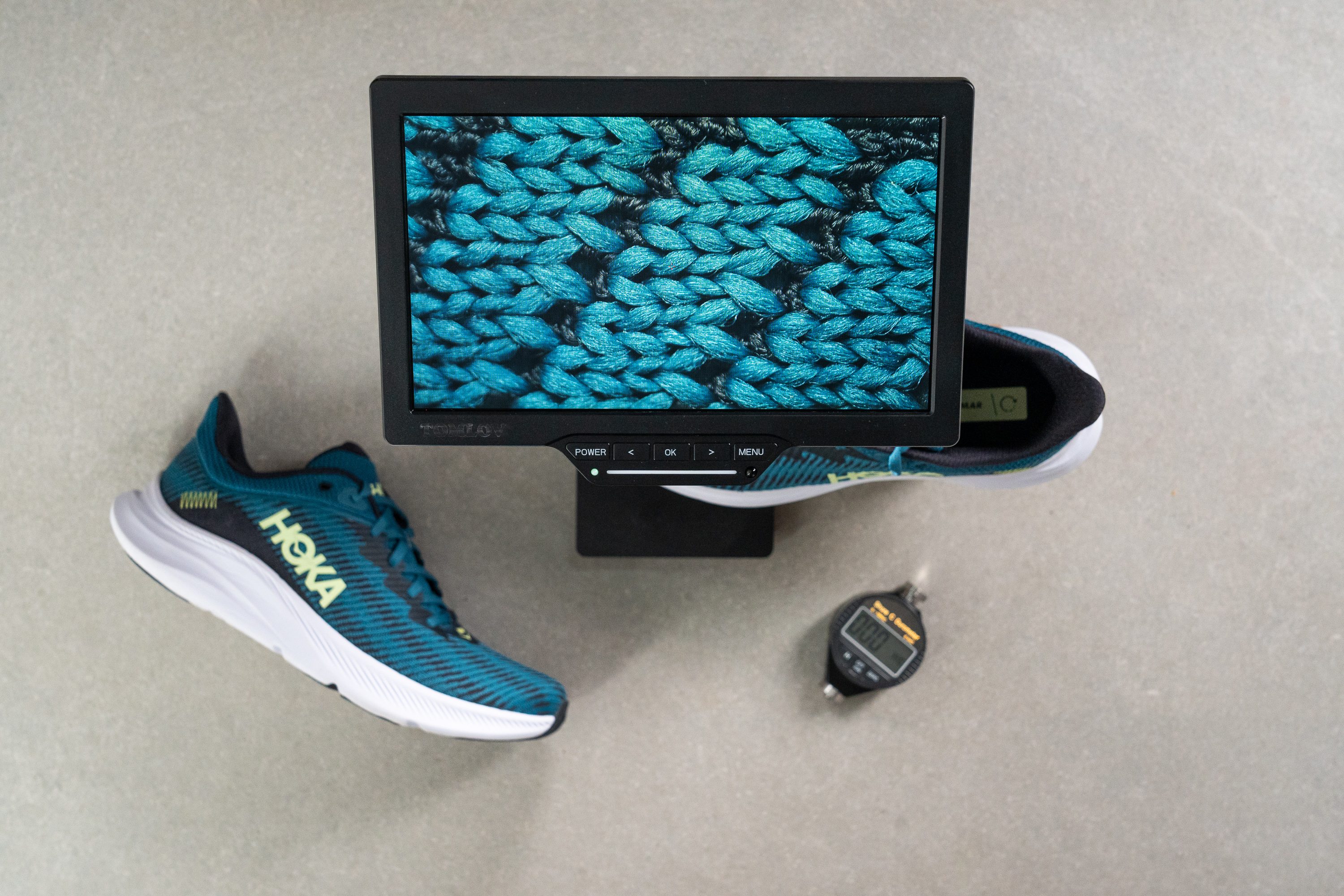
As you can observe in our microscope shots, there's an alternating pattern of thick blue knit and thinner black knit arranged diagonally. It's fascinating to examine it up close and to understand why it's so breathable.
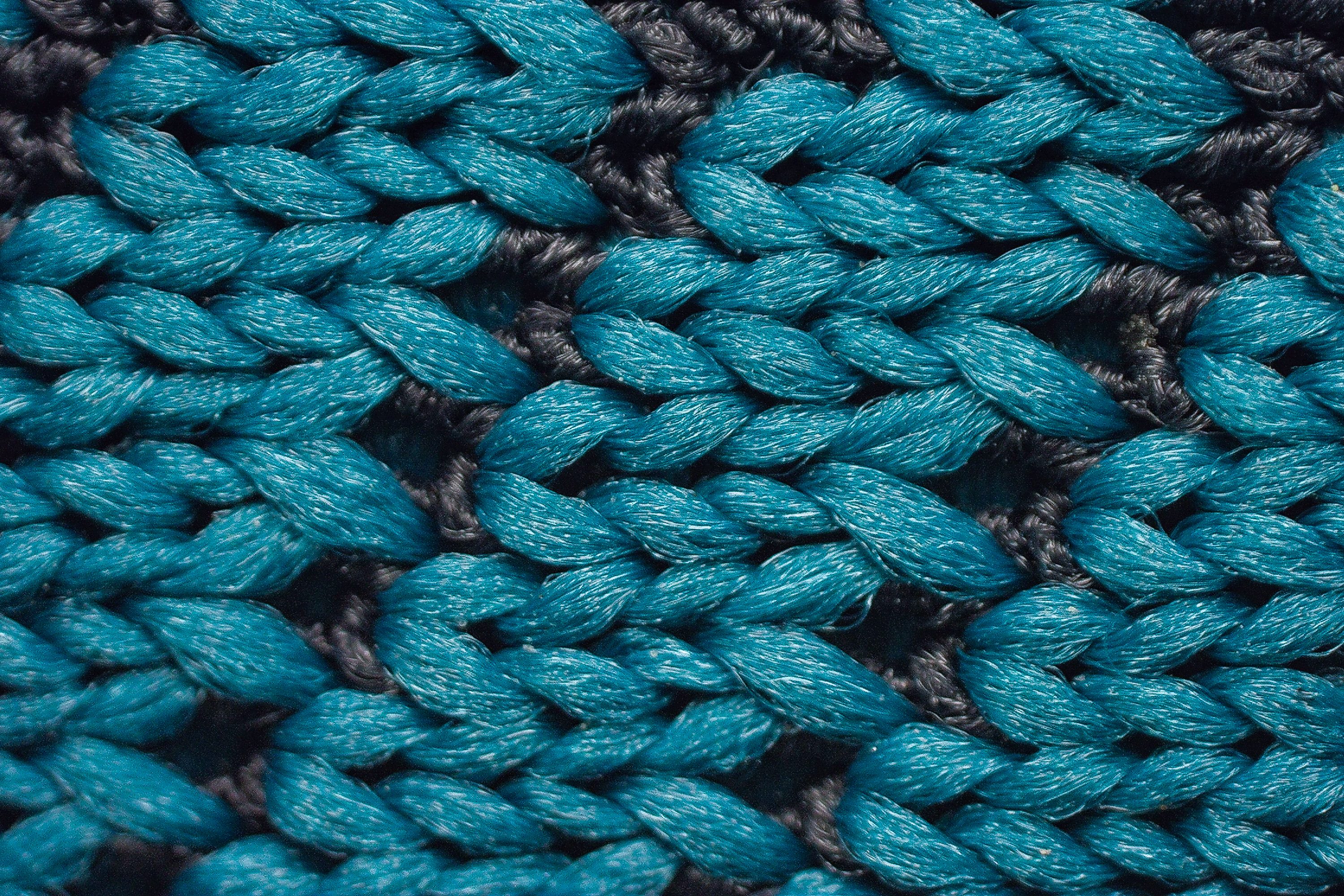
But hang on to your hats, because it's about to get even better. Let's talk durability.
In our standardised Dremel test, where we apply the same abrasive force to each shoe for 4 seconds, the Solimar demonstrated it's second-to-none in terms of durability among versatile daily trainers.
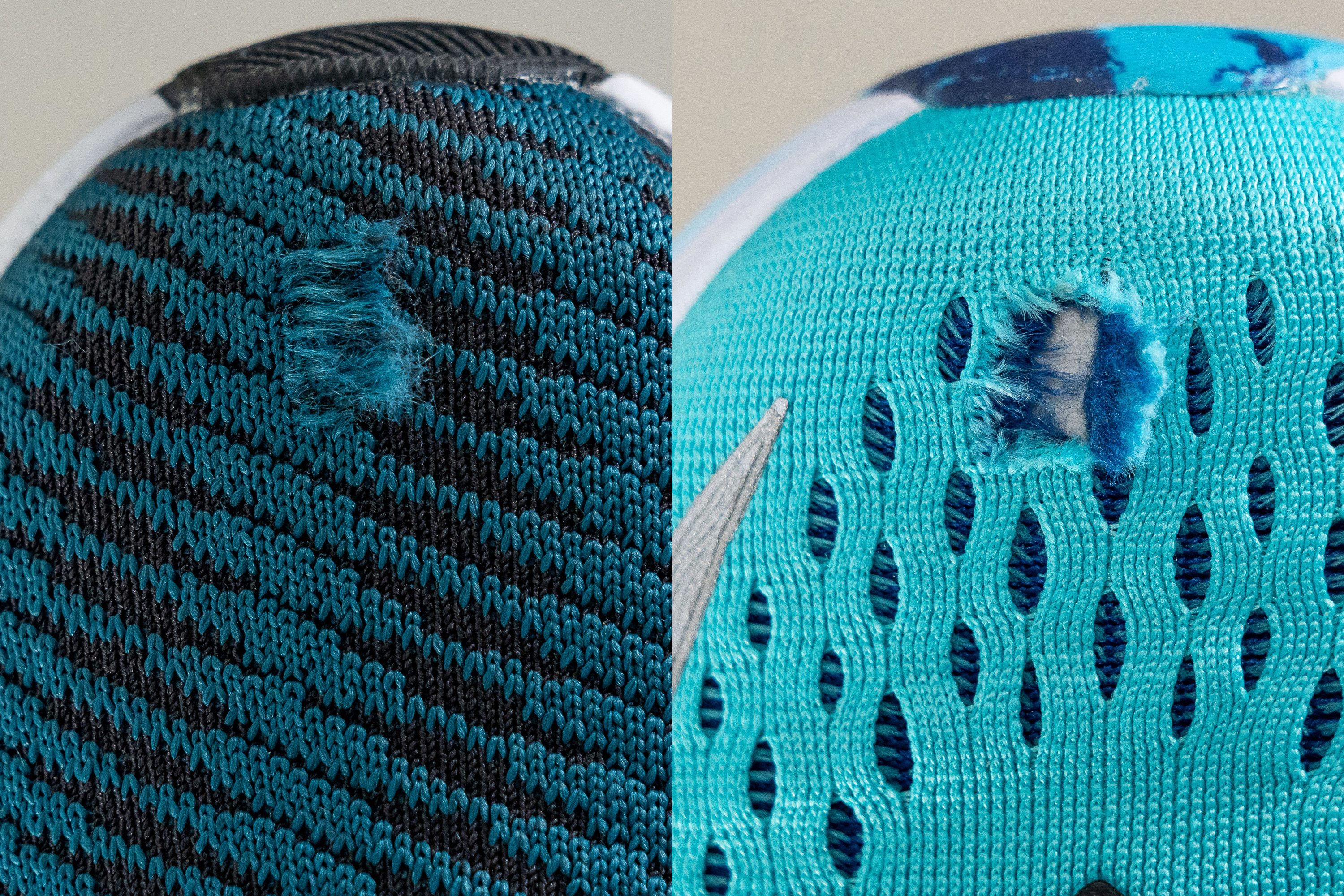
When compared to the Hoka Kawana (pictured on the right), the difference is simply astounding. A large hole is noticeable in the latter, while it's pretty clear that the knit used in the former is in a league of its own.
The heel also demonstrated remarkable durability. It's evident that this shoe lasts as long as possible and withstands a variety of workouts.
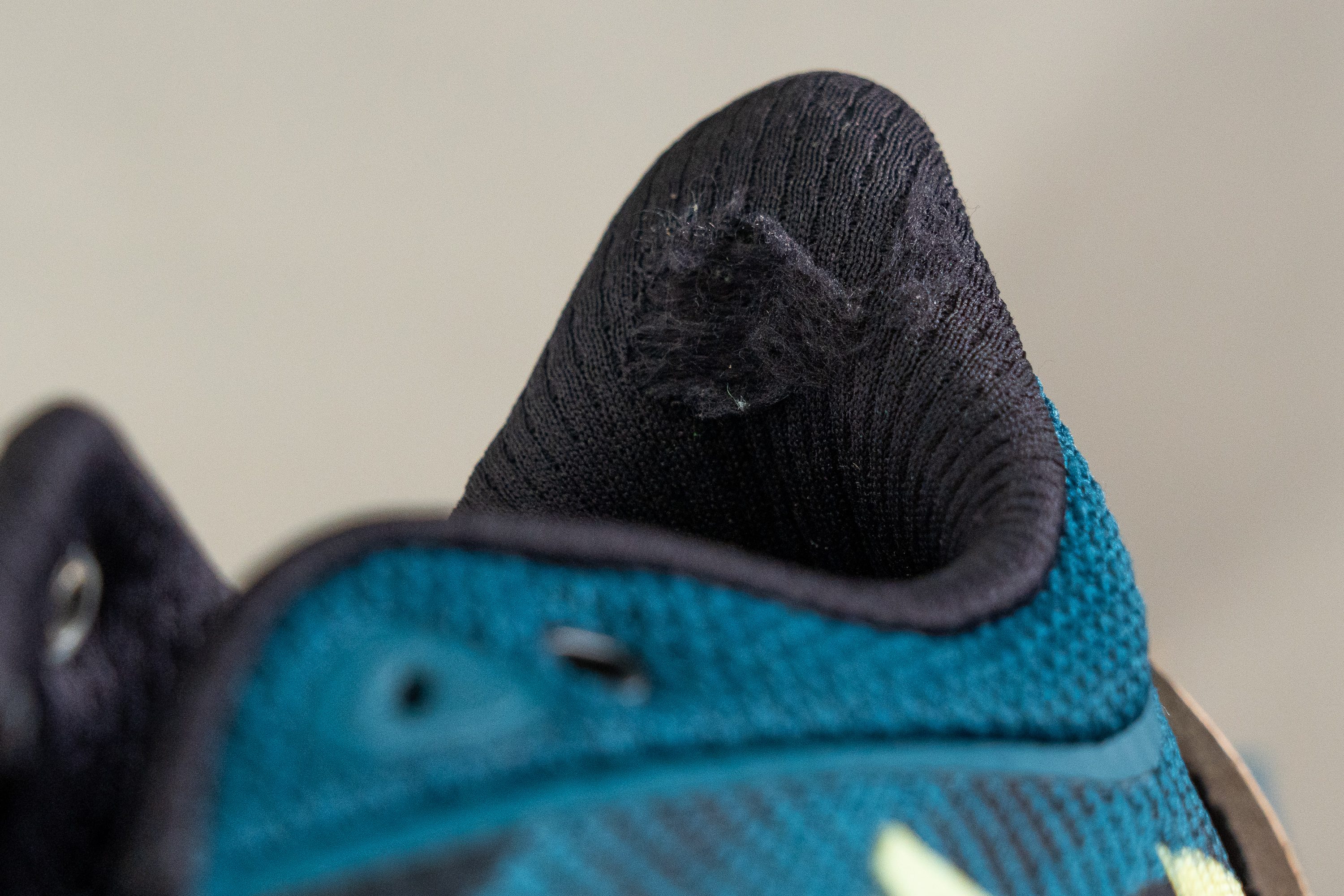
Snug and short, yet comfy
The knit in the toebox is stretchy and the interior padding is very comfortable. We experienced zero rubbing during our field tests.
After our manual exploration, we can confirm that Hoka went all-out to provide comfort. It's rare to see that amount of padding in the heel for a low-weight shoe. It looks like a pillow!
On the other hand, we had no doubts about this—the fit is really narrow in this shoe! Even a bit cramped, to be honest.

Measuring the toebox of this Hoka shoe with a calliper, we weren't surprised with the results at all!
To gauge the fit of this shoe, we'll compare its dimensions to those of other daily trainers on the market, some of which are known to be part of the NUC or "Narrow Upper Club."
| Shoe | Upper - Max width (mm) | Upper - Big toe (mm) | Tapers by |
| Hoka Solimar | 93.1 | 71.0 | 31% |
| Nike Pegasus 40 | 100.8 | 75.7 | 33% |
| ASICS Gel Cumulus 25 | 98.3 | 74.4 | 32% |
| Hoka Kawana | 93.9 | 68 | 38% |
| Saucony Axon 2 | 96.9 | 67.6 | 43% |
In any case, for those who might find it not large enough, there’s a wide version available. So, if you often find yourself torn between sizes, it might be a smart move to go a half size up this time.
Solimar feels smooth, but a tad too firm
As mentioned before, this is not a typical HOKA shoe. When running, it gives a rather firm feel underfoot. That's because Hoka is not using ProFly+ foam like in the Mach 5, but a cheaper and firmer CMEVA midsole.
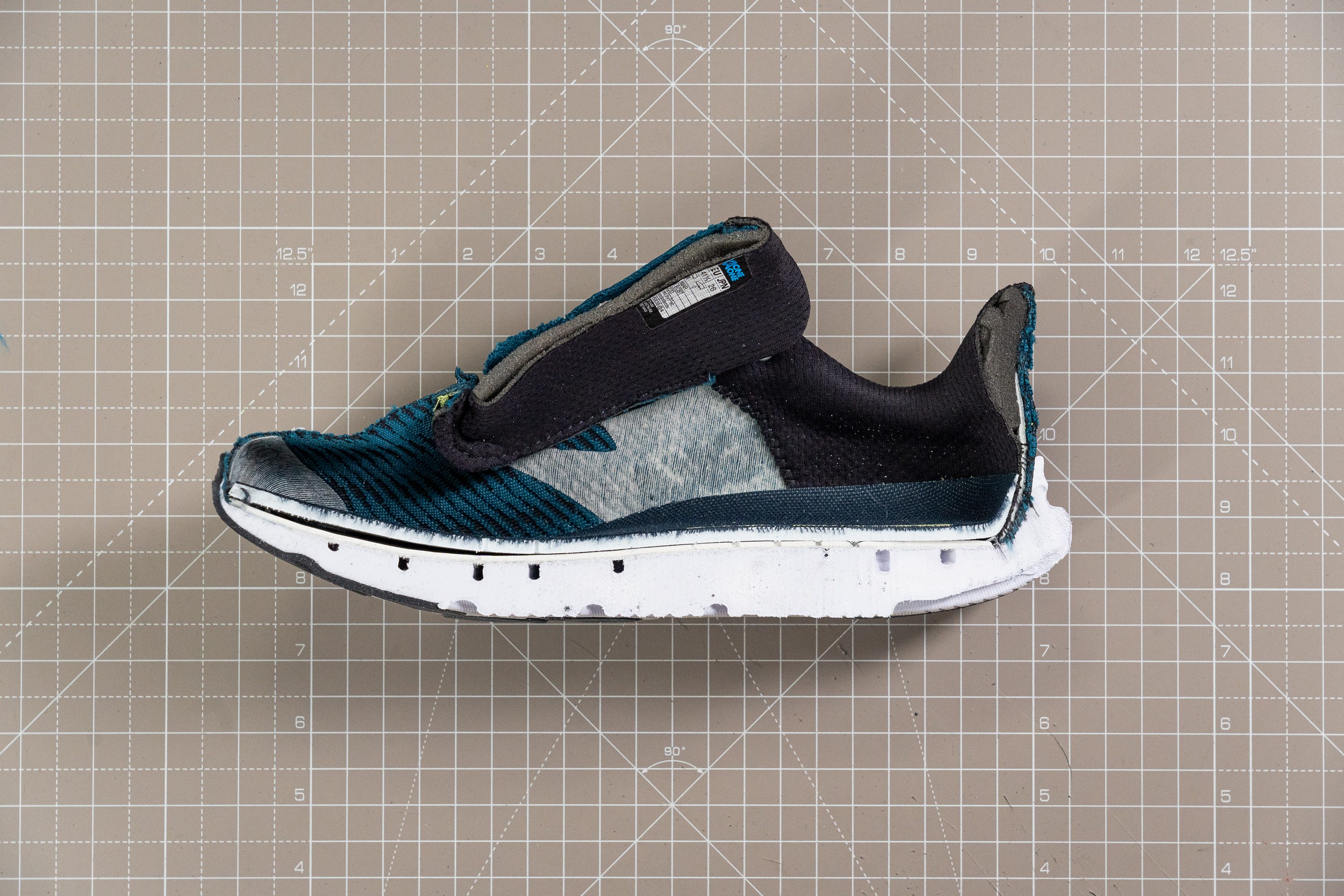
However, even though the shoe's midsole lacks some energy return, it felt quite balanced and suitable for picking up the pace a little bit.
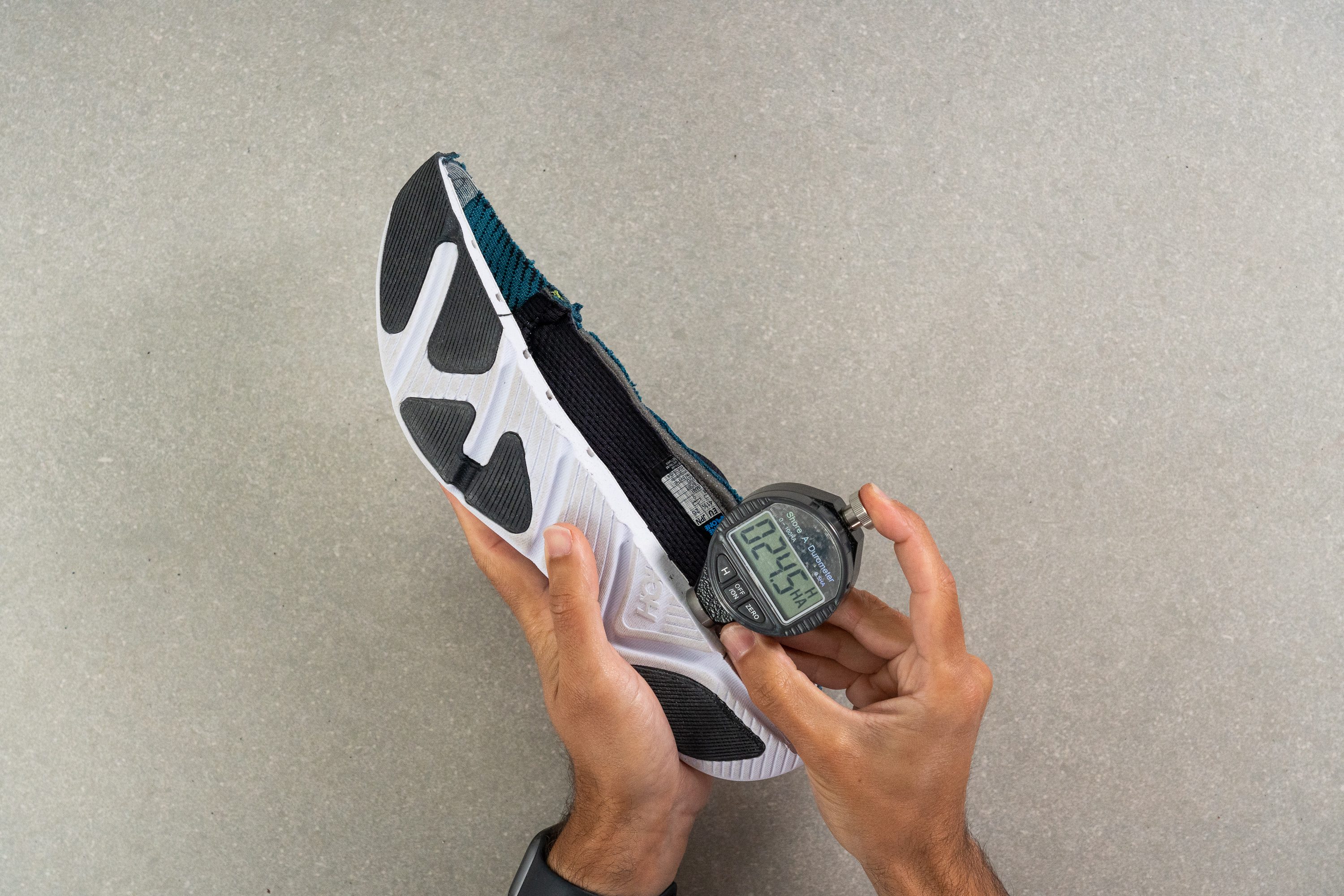
We measured the midsole at 24.6 HA—that's what we think balanced cushioning is. However, it's noticeably firmer than most Hoka shoes. For instance, it's 21% firmer than the Clifton 9 and 15% firmer than the Kawana. As a result, Hoka aficionados might perceive this as a moderate-to-firm shoe.
But the good news is that the Solimar has a regular softness compared to the average of road running shoes.
This shoe also strikes a fine balance between flexibility and rigidity. It's flexible enough for everyday training during slow and easy runs, yet rigid enough to provide stability during gym workouts or casual hikes. As demonstrated in the video above, we rated it a 3/5 for torsional flexibility and 2/5 for longitudinal flexibility.
Moreover, in our 90-degree bend test, the Solimar required 60% less force than the median.

Unfortunately, the Solimar shows catastrophic behaviour under cold temperatures. Nor that we weren't expecting that, being an EVA-based foam.
After spending 20 minutes sitting in our freezer, it gets a bone-chilling 75% stiffer and 41.5% firmer. For instance, the Saucony Tempus does it by 23.3% and 14.9%, respectively
Pick another one for the long runs, please
From our experience, this shoe provides a good amount of impact protection when used at the gym or for walking. But when used as a running shoe, it didn’t feel particularly protective. The CMEVA midsole it's just not good enough.
Our legs clearly didn't feel their best after a 10K run in this Hoka shoe.
Some may be misleading because of the 24.0/30.4 mm stack height, but as we explained in our in-depth guide about midsoles, the quality of the foam plays a greater role in leg protection. The Solimar doesn't have that feature, which is totally reasonable given its MSRP.
If you want a summer-ready shoe that's capable of being used for long runs, casual wear, and gym workouts, pick the ASICS Novablast 3.
It’s light and feels even lighter
On a positive note, the Hoka Solimar does a terrific job in the weight department. Tipping the scale at 8.2 oz (232g) in a men's US size 9, we consider it a fantastic result! That's because it's more than an ounce lighter than road shoes on average!
The Solimar is also a whopping 23% lighter than its main competitor in the Hoka lineup, the Kawana. That's a truly out-of-this-world figure, as we aren't accustomed to seeing such significant weight differences.
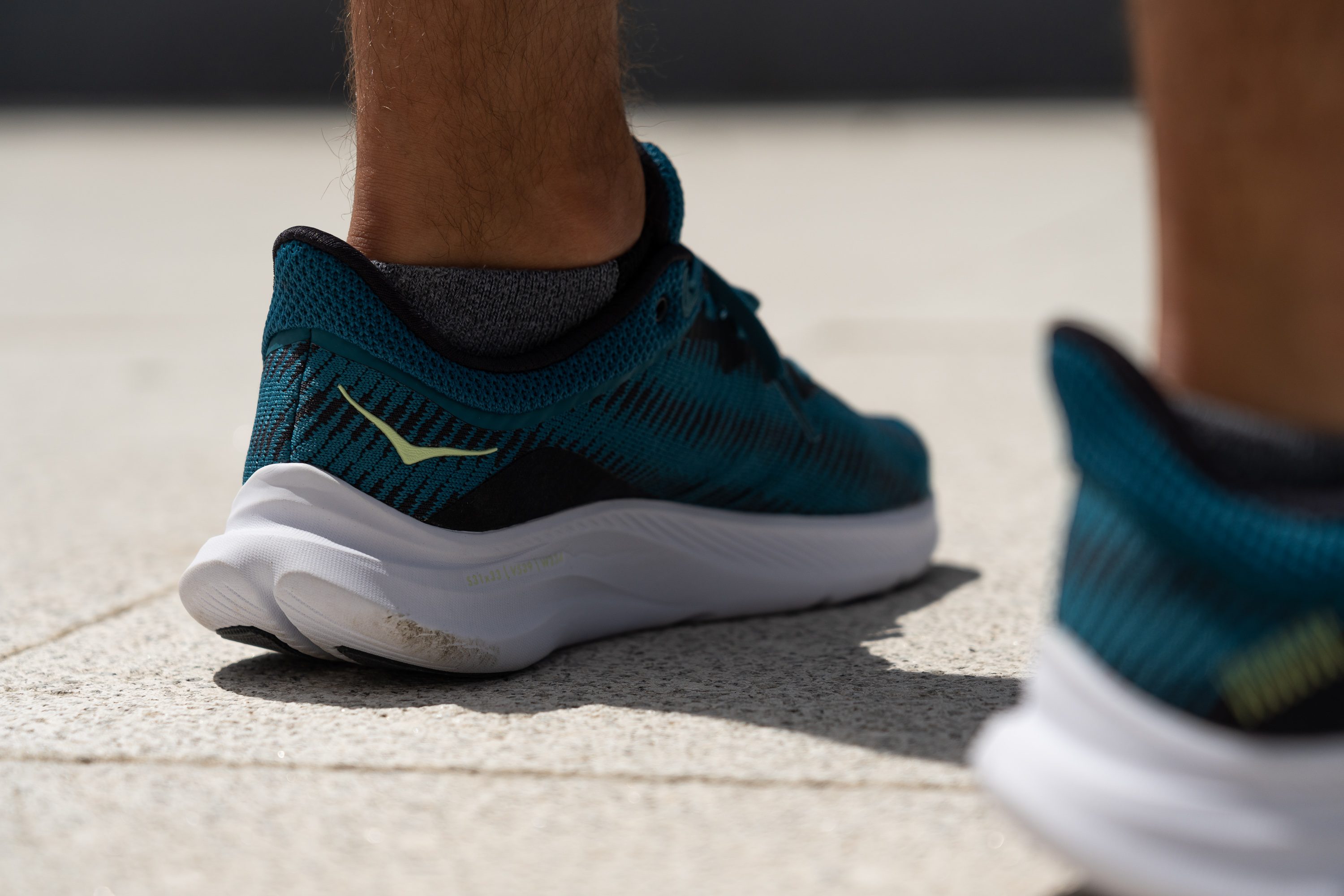
Plus, when running it does feel like a lighter shoe.
Secure lockdown despite non-gusseted tongue
The Solimar delivered a nice and solid lockdown through the midfoot section and the heel.
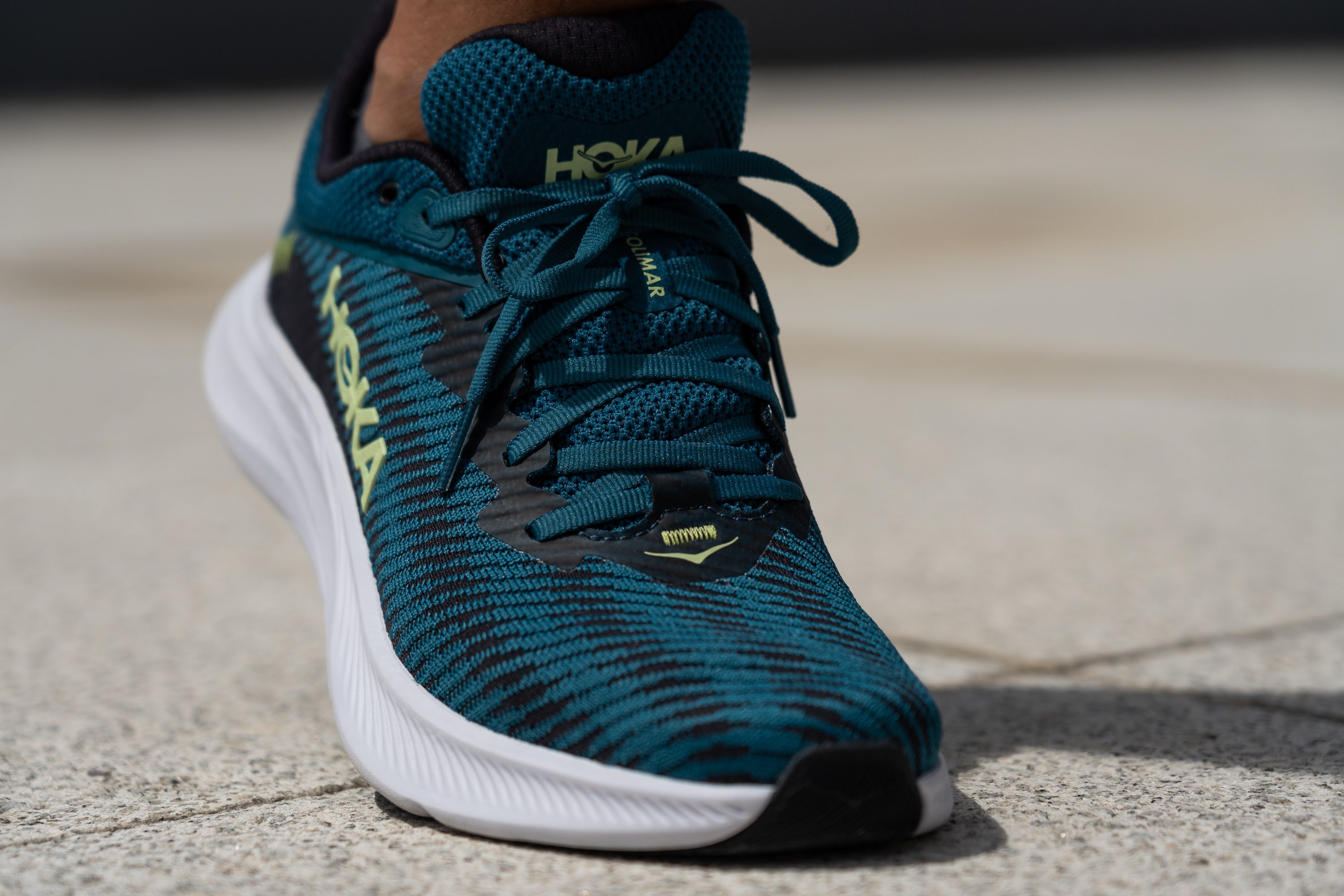
Being a versatile shoe, it's totally reasonable to get a non-gusseted tongue, although it will mean that for some runners the lockdown won't be as good as in other shoes.
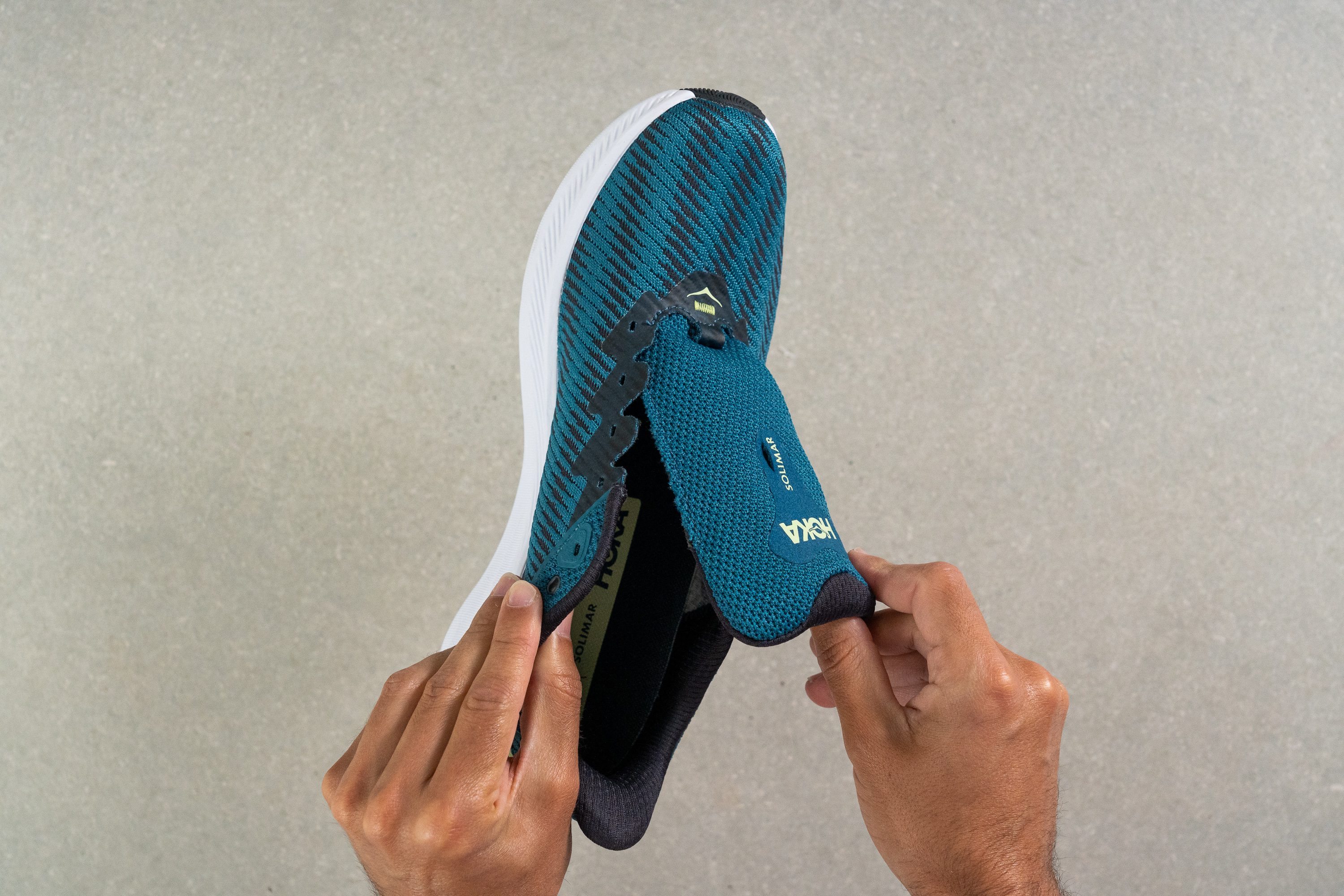
And speaking about the tongue. It's classic Hoka—super thick and cosy. In fact, we clocked it at 7.5 mm, making it a whopping 29% thicker than your average shoe tongue!
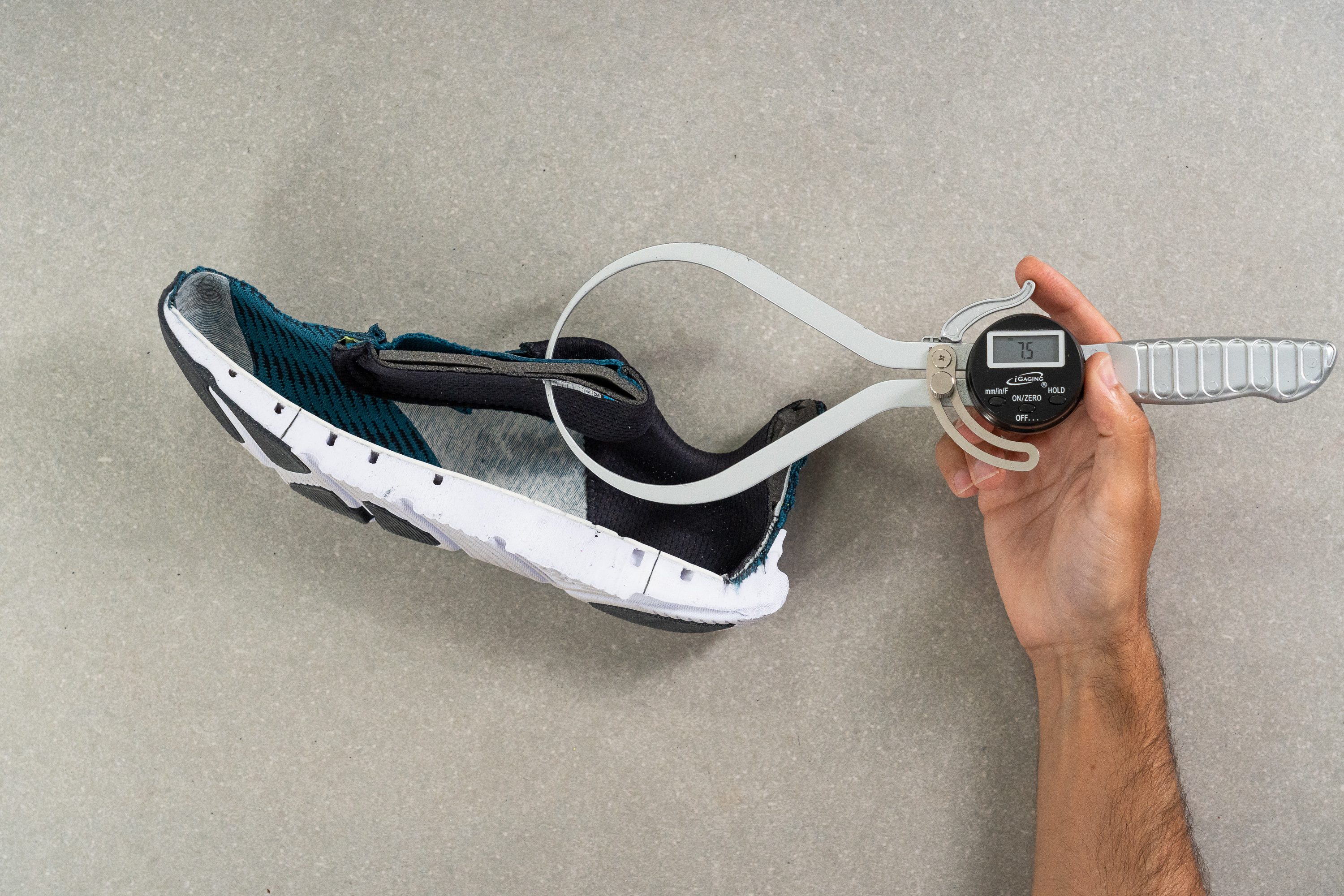
Solimar is a stable and slightly rockered shoe
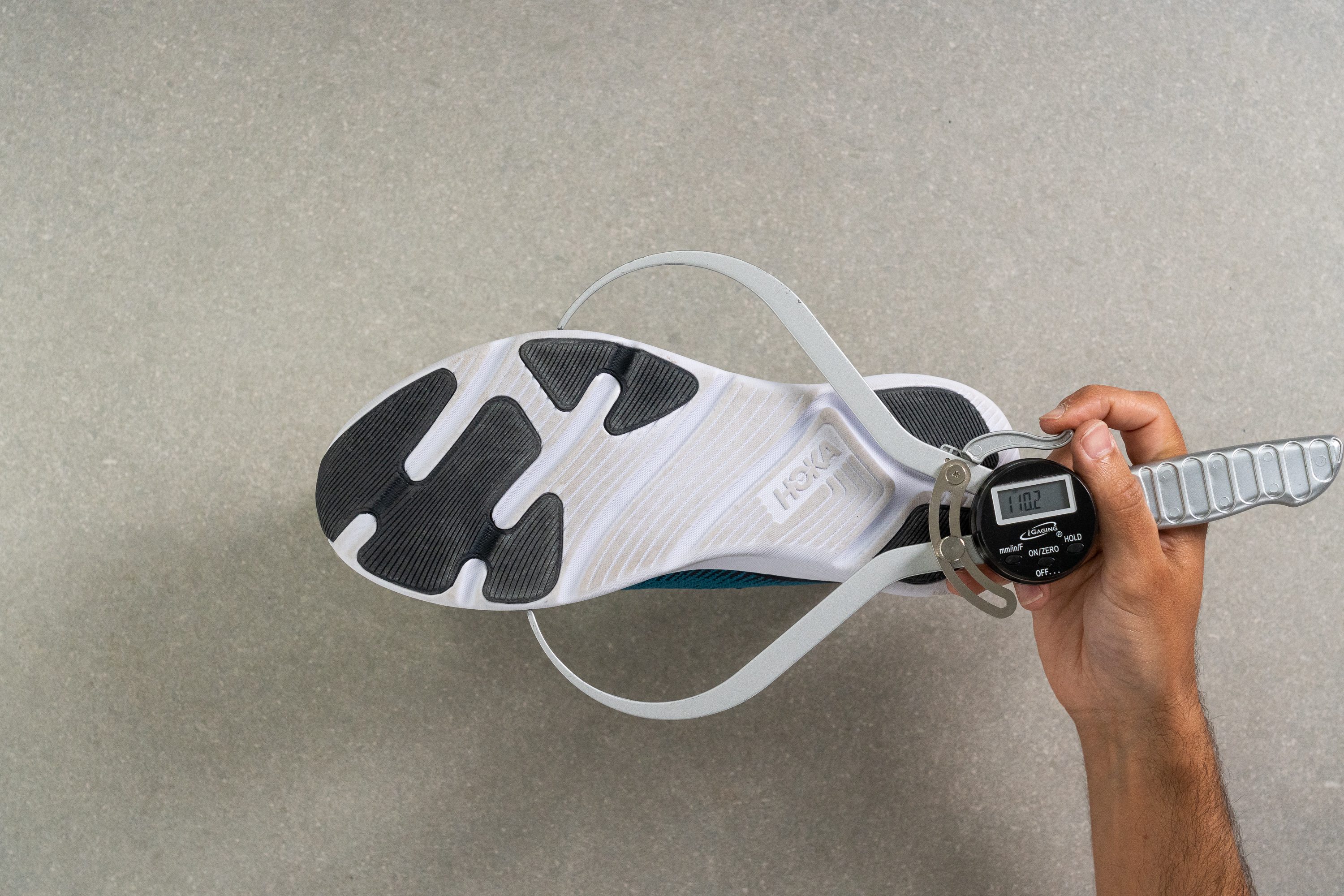
The landing platform of the Solimar is fairly typical and does not specifically provide a race-ready or ultra-stable ride. In fact, it's only 1% narrower in the heel and 2% wider in the forefoot compared to the average road running shoe.
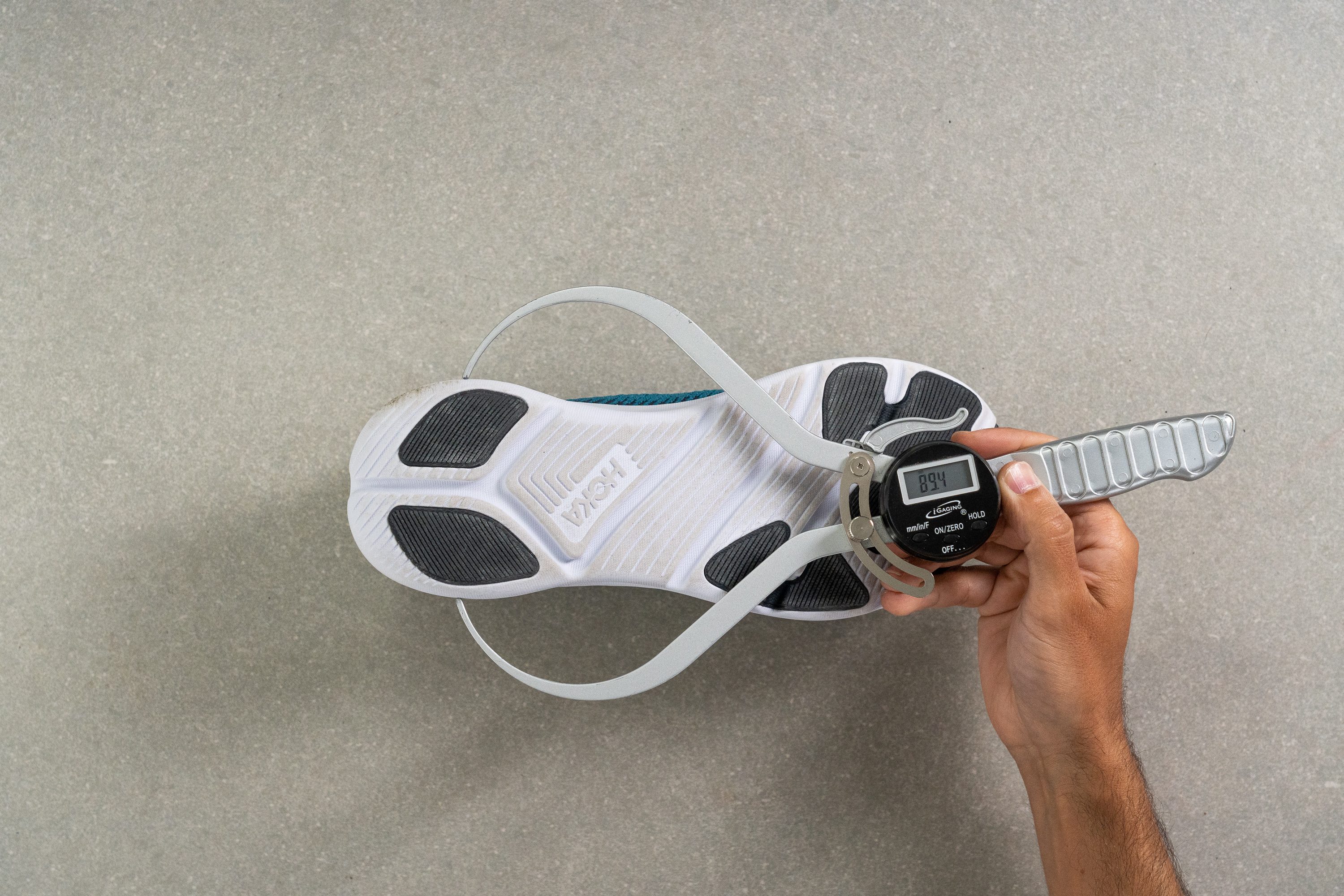
This is a Hoka we're talking about, so there's gotta be a bit of that rocker action, right? While it's not off-the-charts crazy, we verified that's definitely noticeable, especially for a laid-back daily trainer.
Unusual drop for a HOKA shoe
The heel-to-drop (or drop) is the difference in height between the heel and the forefoot. HOKA, until today, has always used a measure between 4 and 5 mm for this kind of shoe, but in this one, we have a taller 6 mm!
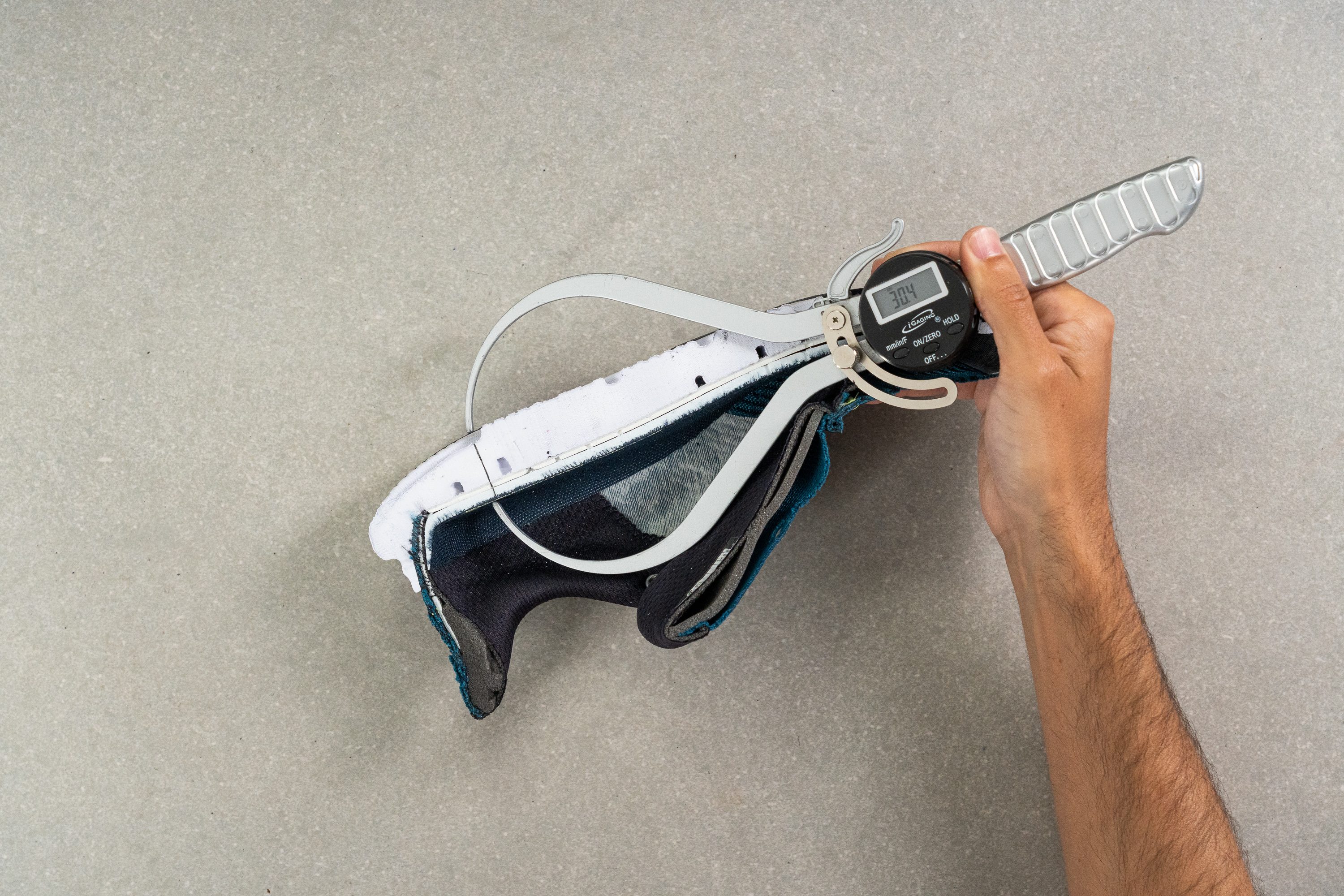
Kudos to Hoka on this one! After our precise measurements, we conclude that the Solimar has a 6.4-mm heel-to-toe drop. That's 0.4 mm away from the official number, which is pretty close!
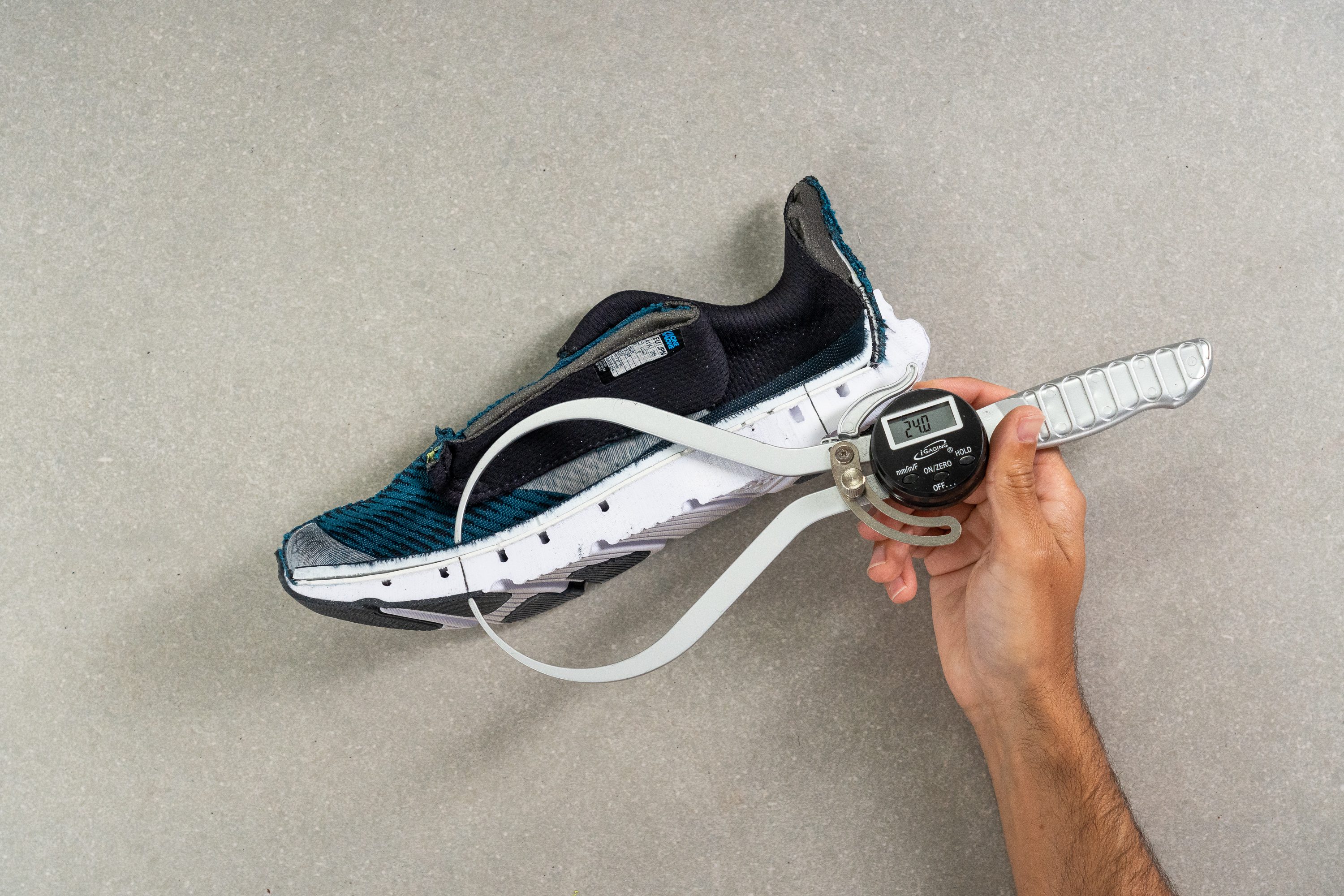
With its 6-mm heel-to-toe drop, this shoe boasts more versatility than your typical 4- or 5-mm options from Hoka. Plus, it eases up on your Achilles, steering clear of the issues that can be caused by low-drop shoes.
On the other hand, if you're thinking that 6 mm it's too steep for you, give Altra shoes a look.
Different even in the look
We enjoyed the lean design that separates this shoe from many others of the same brand, which usually look bulkier and more cumbersome.
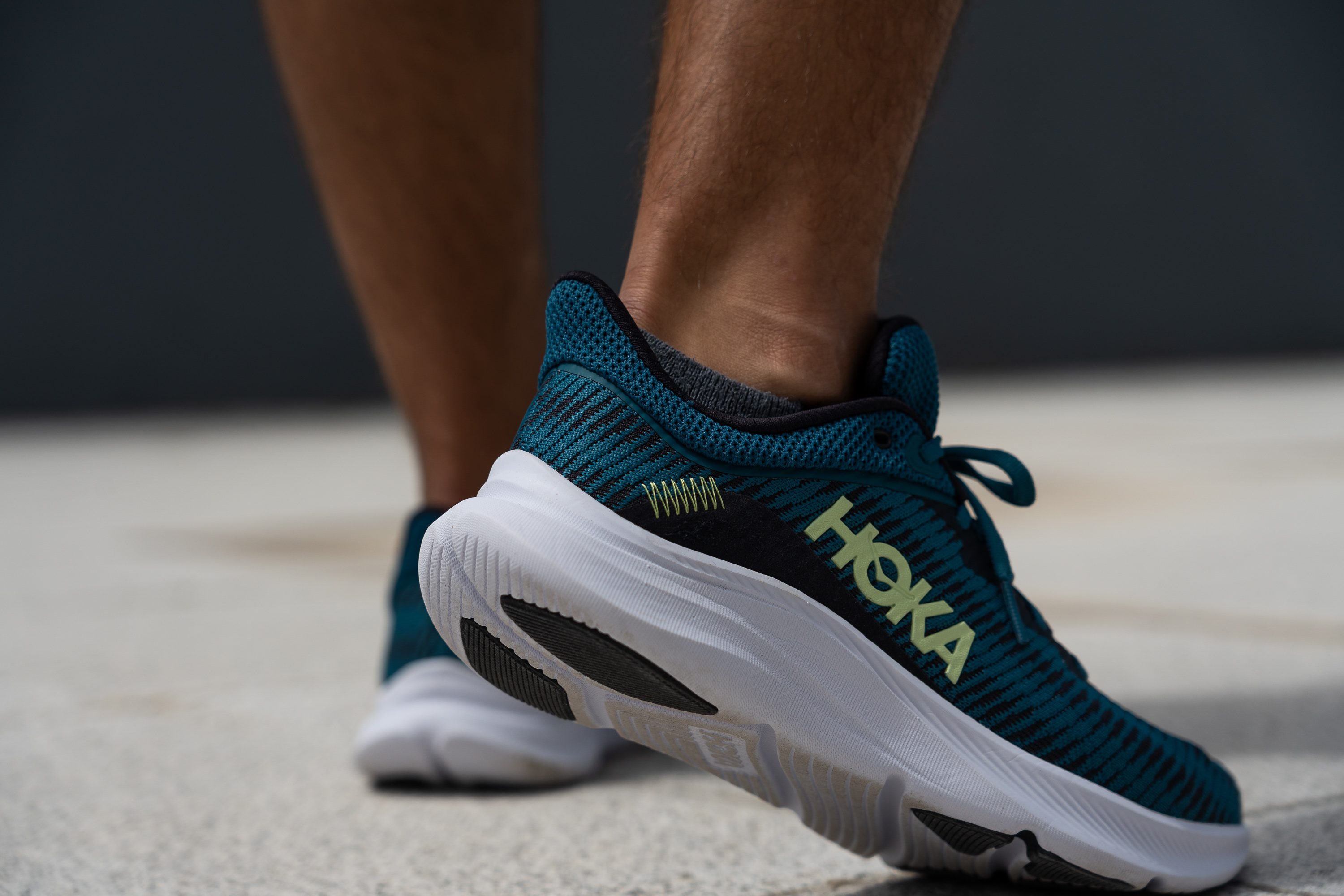
Solimar is wallet-friendly
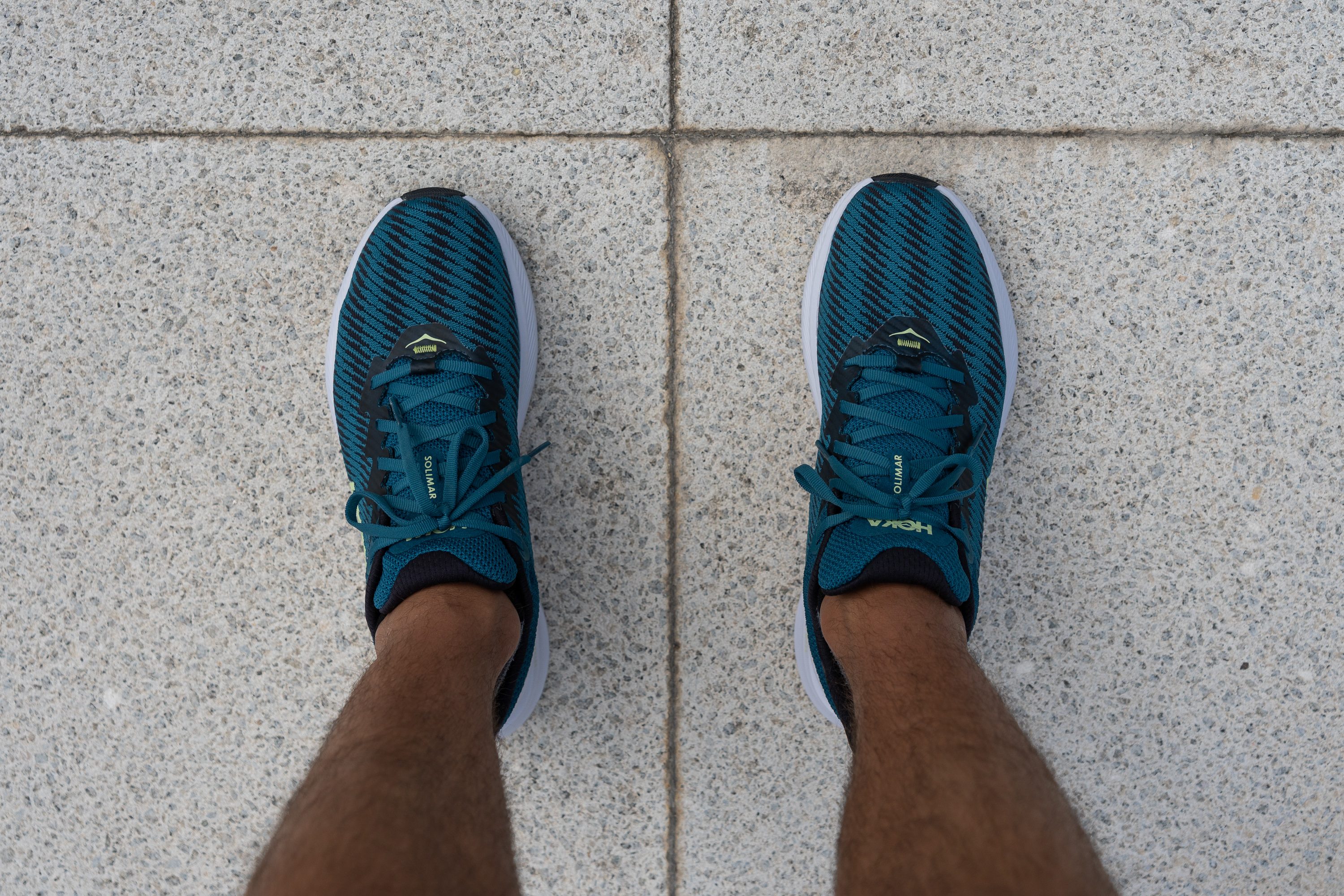
At £130 the Solimar is on the cheaper side if we consider that it’s a Hoka running shoe, which usually has a price that ranges from £140 to £200.

